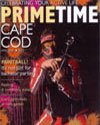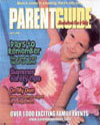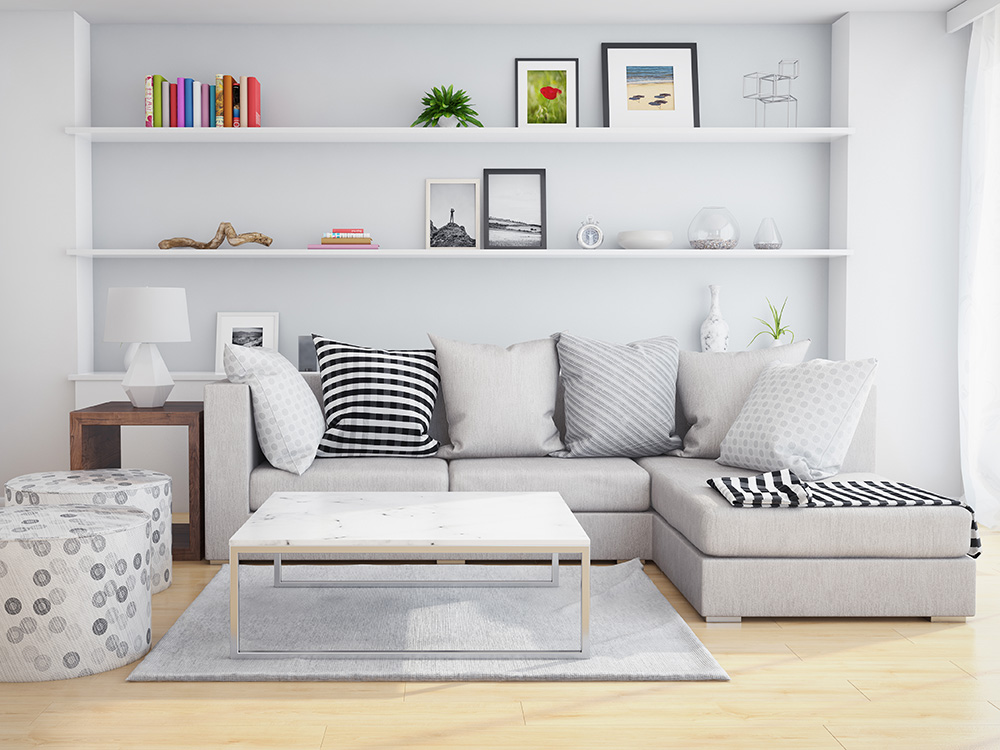
Read the most recent interviews and articles that Nicole has been featured in! Inside the articles are Nicole’s helpful organizing tips, and details about her experiences as a professional organizer.
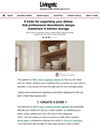
by Luke Arthur Wells
The question is…how to organize a kitchen so that you can make room for dishes, whether you’re suffering from an excess you don’t want to declutter, or you’ve just not found the right spot for your everyday plates.
I asked some professional organizers and interior designers for their top tips to make these spaces work.
“Zone 1 will have dishes you need to access on a daily basis,” explains Nicole Gabai, a professional organizer and author of The Art of Organizing. “You’ll want them near the table for easy table serving or close to where you are cooking and serving.” Read more on Living Etc. >
 Homes and Gardens
Homes and Gardens
by Chiana Dickson
Whether you are moving house, or packing for a longer trip, keeping your clothes on their hangers can make shifting your wardrobe a little simpler – and makes unpacking a breeze. A common clothes storage mistake is not using hangers strong enough for the garments you own – but picking out sturdy hangers is particularly important when it comes to moving to prevent them from sagging and snapping, points out Nicole Gabai, a professional organizer at B.Organized. Read more on Homes & Gardens >

by Taylor Tobin
The meal prep trend encourages home cooks to get smart about how they store their ingredients and leftovers, which requires a healthy supply of food storage containers.
“Glass is the most durable and has the greatest longevity, and it’s 100% recyclable. Because of this, glass containers are the best selection for the environment, and they won’t end up in a landfill. Since glass is inert, it needs no chemical layer between it and your food when storing, so it doesn’t affect the taste of any food,” explains Nicole Gabai, a professional organizer and the author of The Art of Organizing, an Artful Guide to An Organized Life. Read more on Southern Living >
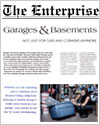
by Susan Shalhoub
Photos in home magazines show garages that you could easily mistake for kitchens. They have sleek rubber flooring, sports equipment neatly corralled, elaborate potting benches and sparkling stainless steel work counters…But the reality is, most us us don’t go that fancy. Most of us would be thrilled to reduce clutter and store what’s there with a system that makes things easy to find. Read more >

by Candace Hammond
We’ve all been there, that moment when we stand in our closet pawing through our clothes and utter those words, “I have nothing to wear!” We may feel that way, but rarely is it true. Read more >

A publication of the Cape Cod Times
By Laurie Curtis
Even as a little girl, Nicole Gabai loved to organize. As a 6-year-old attending a Montessori school in Paris, she took it upon herself to keep the games at school arranged in a systemized manner. Among her favorite pastimes as a child were playing post office and store, keeping track of inventory. Read more >

by Laura M. Reckford
I have spent years trying to explain to friends and family that what looks like disorganization and chaos is actually a sign of creativity. I know where everything is. Really. So when I heard about Nicole Gabai of B. Organized, a professional organizer, I went through the equivalent of the five stages of grief. Read more >

A publication of The Enterprise
by Jeannie Cafarelli
It had never occurred to me how much “stuff” a person could accumulate over a lifetime, until it hit home. At age 69, my mother found herself living alone in a large colonial homestead (a.k.a. “the homestead”) after my Dad passed away…I’m convinced that a trained professional is a logical choice when family emotions may get in the way. Read more >

by Kirsten Halvorsen Stahl
“Summer is a time for relaxation and wide-open spaces, indoors as well as out. Enjoying your home, while the breeze drifts through the open windows or the evening light fills the house, should be one of the season’s simple pleasures — unless bills are piled high on the counter, newspapers and magazines are stacked on the living room floor, and the desk is overflowing with mail. Read more >
Coastlines
Meticulously dressed from head to toe, one would imagine that Nicole Gabai has her life perfectly organized and together – boy, does she ever! Owner of B. Organized, Nicole is a hands-on professional organizing consultant dedicated to helping people who want to improve their living and working spaces. Originally hailing from New York with a ten year background in TV production, and a fashion degree from Parsons School of Design and the Fashion Institute of Technology, Nicole has spent a lot of her time designing, organizing paper work and creating time-managed schedules. Read more >PRIMETIME Cape Cod
by Amy Dufault
Cape Cod Times
by Amanda Lehmert, Staff Writer
Parent Guide
Finally, a personalized service run by a woman with the enthusiasm and expertise to unclutter even the most cluttered lifestyle. A multitasking queen who had her hand in everything from production to set decoration during her ten-year career in television, Nicole Gabai offers time management solutions, including customized filing fixes, to nix Moms' organization problems. Read more >The Century 21 Real Estate Show
WXTK FM Radio
Mark Garner's Interview with Nicole Gabai
Mark: How did you get the idea to start a business as an organizer?
Nicole: My background is in TV production, where I worked for 10 years as a producer and production manager. I gained a lot of organizational skills and experience organizing shoots and TV shows having worked at MTV, Nickelodeon, the Orlando film commission and then at a commercial TV production company. About 7 years ago I wanted to start my own business in something that had flexible hours and also where I could use my skills and expertise. So it really was a natural evolution, I started by organizing the office of a couple of people I knew and I realized this could be a profitable business. Read more >

by Luke Arthur Wells
The question is…how to organize a kitchen so that you can make room for dishes, whether you’re suffering from an excess you don’t want to declutter, or you’ve just not found the right spot for your everyday plates.
I asked some professional organizers and interior designers for their top tips to make these spaces work.
“Zone 1 will have dishes you need to access on a daily basis,” explains Nicole Gabai, a professional organizer and author of The Art of Organizing. “You’ll want them near the table for easy table serving or close to where you are cooking and serving.” Read more on Living Etc. >
 Homes and Gardens
Homes and Gardens
by Chiana Dickson
Whether you are moving house, or packing for a longer trip, keeping your clothes on their hangers can make shifting your wardrobe a little simpler – and makes unpacking a breeze. A common clothes storage mistake is not using hangers strong enough for the garments you own – but picking out sturdy hangers is particularly important when it comes to moving to prevent them from sagging and snapping, points out Nicole Gabai, a professional organizer at B.Organized. Read more on Homes & Gardens >

by Taylor Tobin
The meal prep trend encourages home cooks to get smart about how they store their ingredients and leftovers, which requires a healthy supply of food storage containers.
“Glass is the most durable and has the greatest longevity, and it’s 100% recyclable. Because of this, glass containers are the best selection for the environment, and they won’t end up in a landfill. Since glass is inert, it needs no chemical layer between it and your food when storing, so it doesn’t affect the taste of any food,” explains Nicole Gabai, a professional organizer and the author of The Art of Organizing, an Artful Guide to An Organized Life. Read more on Southern Living >

by Susan Shalhoub
Photos in home magazines show garages that you could easily mistake for kitchens. They have sleek rubber flooring, sports equipment neatly corralled, elaborate potting benches and sparkling stainless steel work counters…But the reality is, most us us don’t go that fancy. Most of us would be thrilled to reduce clutter and store what’s there with a system that makes things easy to find. Read more >

by Candace Hammond
We’ve all been there, that moment when we stand in our closet pawing through our clothes and utter those words, “I have nothing to wear!” We may feel that way, but rarely is it true. Read more >

A publication of the Cape Cod Times
By Laurie Curtis
Even as a little girl, Nicole Gabai loved to organize. As a 6-year-old attending a Montessori school in Paris, she took it upon herself to keep the games at school arranged in a systemized manner. Among her favorite pastimes as a child were playing post office and store, keeping track of inventory. Read more >

by Laura M. Reckford
I have spent years trying to explain to friends and family that what looks like disorganization and chaos is actually a sign of creativity. I know where everything is. Really. So when I heard about Nicole Gabai of B. Organized, a professional organizer, I went through the equivalent of the five stages of grief. Read more >

A publication of The Enterprise
by Jeannie Cafarelli
It had never occurred to me how much “stuff” a person could accumulate over a lifetime, until it hit home. At age 69, my mother found herself living alone in a large colonial homestead (a.k.a. “the homestead”) after my Dad passed away…I’m convinced that a trained professional is a logical choice when family emotions may get in the way. Read more >

by Kirsten Halvorsen Stahl
“Summer is a time for relaxation and wide-open spaces, indoors as well as out. Enjoying your home, while the breeze drifts through the open windows or the evening light fills the house, should be one of the season’s simple pleasures — unless bills are piled high on the counter, newspapers and magazines are stacked on the living room floor, and the desk is overflowing with mail. Read more >
Coastlines
Meticulously dressed from head to toe, one would imagine that Nicole Gabai has her life perfectly organized and together – boy, does she ever! Owner of B. Organized, Nicole is a hands-on professional organizing consultant dedicated to helping people who want to improve their living and working spaces. Originally hailing from New York with a ten year background in TV production, and a fashion degree from Parsons School of Design and the Fashion Institute of Technology, Nicole has spent a lot of her time designing, organizing paper work and creating time-managed schedules. Read more >PRIMETIME Cape Cod
by Amy Dufault
Cape Cod Times
by Amanda Lehmert, Staff Writer
Parent Guide
Finally, a personalized service run by a woman with the enthusiasm and expertise to unclutter even the most cluttered lifestyle. A multitasking queen who had her hand in everything from production to set decoration during her ten-year career in television, Nicole Gabai offers time management solutions, including customized filing fixes, to nix Moms' organization problems. Read more >The Century 21 Real Estate Show
WXTK FM Radio
Mark Garner's Interview with Nicole Gabai
Mark: How did you get the idea to start a business as an organizer?
Nicole: My background is in TV production, where I worked for 10 years as a producer and production manager. I gained a lot of organizational skills and experience organizing shoots and TV shows having worked at MTV, Nickelodeon, the Orlando film commission and then at a commercial TV production company. About 7 years ago I wanted to start my own business in something that had flexible hours and also where I could use my skills and expertise. So it really was a natural evolution, I started by organizing the office of a couple of people I knew and I realized this could be a profitable business. Read more >



























